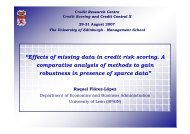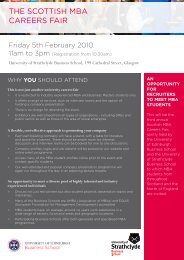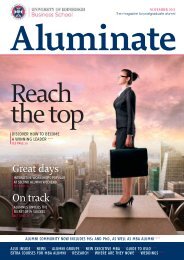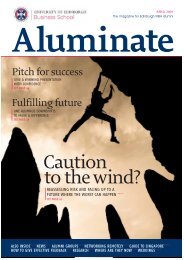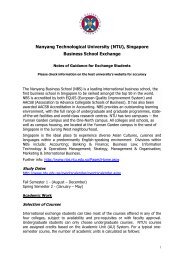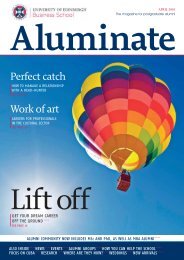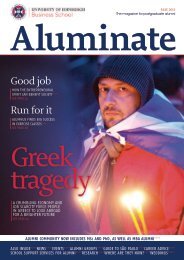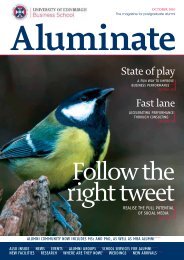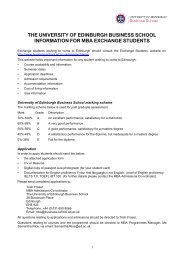killed Saab Automobile? - Business School - University of Edinburgh
killed Saab Automobile? - Business School - University of Edinburgh
killed Saab Automobile? - Business School - University of Edinburgh
Create successful ePaper yourself
Turn your PDF publications into a flip-book with our unique Google optimized e-Paper software.
III/ ANALYSIS: WHAT WENT WRONG?<br />
The collapse <strong>of</strong> <strong>Saab</strong> raises many questions about why the demise occurred and whether it was<br />
preventable. In this section we will <strong>of</strong>fer our perspective on the following key questions:<br />
1. Was <strong>Saab</strong>’s demise inevitable?<br />
2. Was GM the right partner?<br />
3. A strong brand but a weak business?<br />
4. Did Spyker really have a chance?<br />
5. Could China have saved <strong>Saab</strong>?<br />
6. What similarities are there between <strong>Saab</strong>’s collapse and the last collapse <strong>of</strong> a major auto firm,<br />
namely Rover in 2005?<br />
Was <strong>Saab</strong>’s Demise Inevitable?<br />
There is considerable overcapacity in the automotive industry, in the order <strong>of</strong> 30% globally. This has<br />
been a long-term problem for the industry and means that even though global sales have been rising,<br />
there is fierce competition. Developing countries <strong>of</strong>ten see an indigenous automotive industry as a<br />
symbol <strong>of</strong> and force for economic development. This creates pressures for new capacity to be added at<br />
the same time as mature economies are reluctant to relish their auto industries due to the social and<br />
economic consequences. Car manufacturers thus have to define their competitive positions and carve<br />
out niches that are large enough not only to support current operations, but also to generate the very<br />
substantial financial resources needed to develop new vehicles that are competitive in terms <strong>of</strong> cost,<br />
quality and performance. The development cost for a new model, on a stand-alone platform, is<br />
currently in the order <strong>of</strong> $1bn.<br />
Although having a very loyal band <strong>of</strong> customers, in comparison to its direct competitors such as Audi<br />
and BMW, <strong>Saab</strong> was unable to achieve these economies <strong>of</strong> scale. Thus, a major contribution to <strong>Saab</strong>’s<br />
failure came from strong competitors who not only constrained <strong>Saab</strong>’s ability to grow but actually ate<br />
away at <strong>Saab</strong>'s niche market.<br />
Our analysis suggests that three factors combined to seal <strong>Saab</strong>’s fate:<br />
1/ <strong>Saab</strong> was positioned in a niche market, which by definition meant that it would always find it<br />
difficult to sell large volumes <strong>of</strong> vehicles. Herein lies a conundrum for any brand that emphasizes<br />
difference from the mainstream as part <strong>of</strong> its brand values. Too different from the mainstream and<br />
there will be insufficient buyers; not different enough and there will be an insufficient price<br />
premium to compensate for the lower volumes. This was one <strong>of</strong> <strong>Saab</strong>’s fundamental problems.<br />
Tight competition in the luxury segment meant that <strong>Saab</strong> could not command high margins on its<br />
sales, which put the firm at a continued disadvantage against its larger competitors who are able<br />
to <strong>of</strong>fset their development cost across more many more units. <strong>Saab</strong> was caught in the 'unhappy<br />
middle' between low-volume and high-margin producers further upmarket, and higher-volume<br />
lower-margin producers adjacent to it. This position was not sustainable.<br />
20




